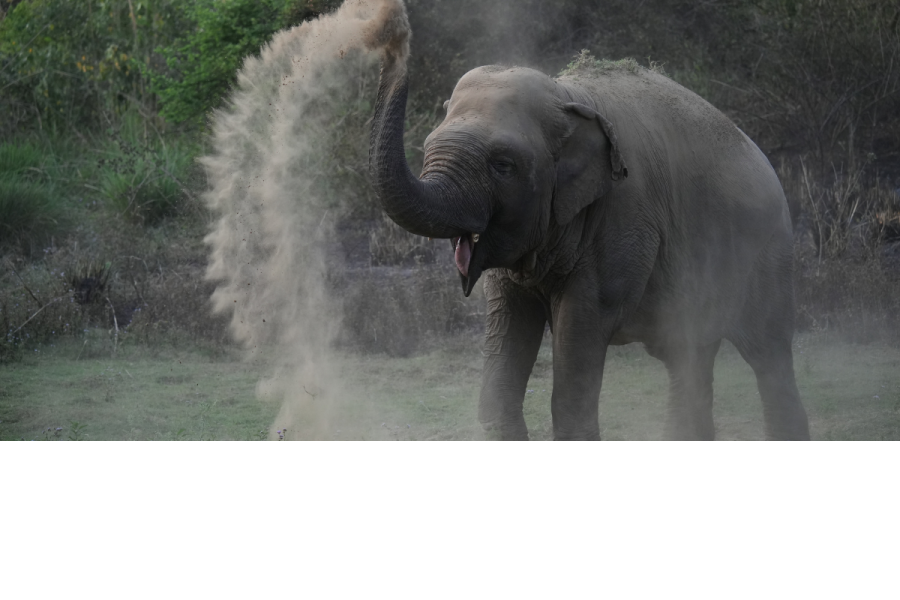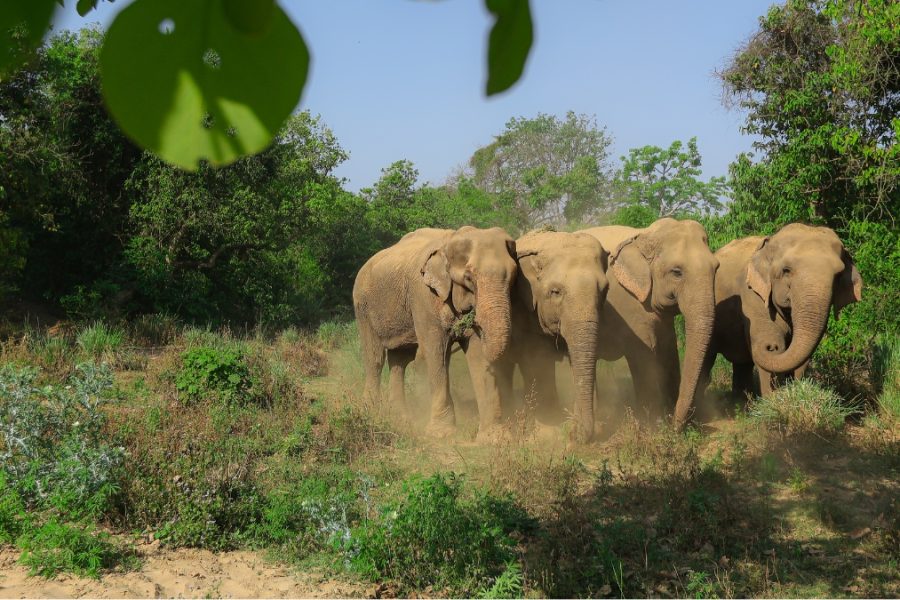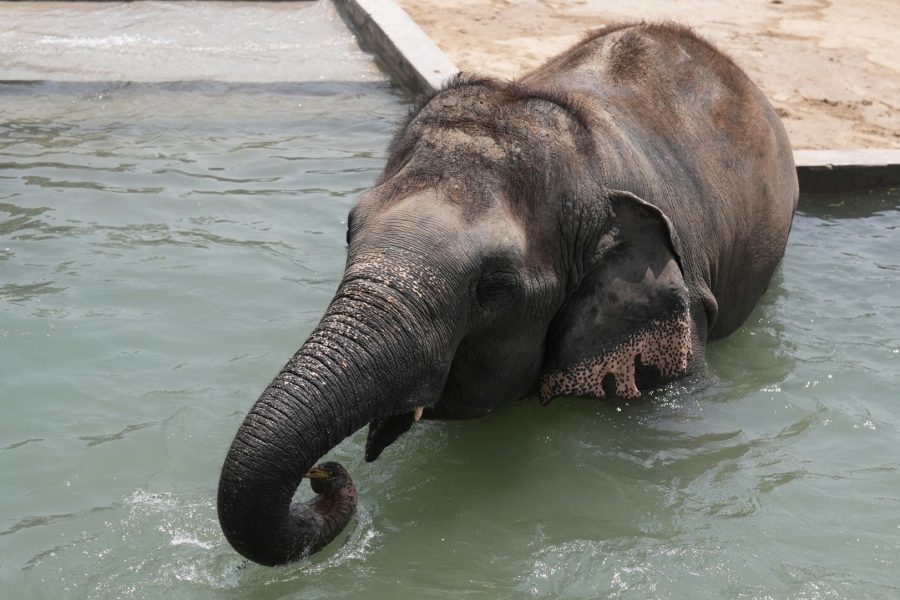Captive elephants are a sad reality of India’s cultural history. It is a reality that cannot be ignored, for the innocent pachyderm suffers endlessly since its indoctrination into captivity. Beginning with the cruel process of being ripped apart from its maternal herd, a calf is isolated and restrained inside a squeeze trap, where it is beaten mercilessly until its willful, wild spirit is broken. Following that, torture and suffering just become a way of life for these captive elephants.
Improper and poor husbandry practices in captivity end up becoming a quick invitation for chronic ailments and diseases. Walking on concrete roads slowly wears off the delicate footpads of the elephants and puts them at a greater risk of developing early arthritis. Injuries inflicted by sharp stones, metal objects, or hot tar inevitably lead to infections that spread to joints. Each step becomes a little harder to take with a weight on their backs of howdah and tourists. When the elephants are out navigating through the artificial, human-dominated environment, little or no attention is paid to their nutrition and hydration, nor to their need to rest, which prematurely weakens their body. When not working, the elephant is tethered to one spot for prolonged periods by ropes and chains, often including spiked anklets that dig into its skin leading to painful lesions and abscesses. Critical medical aid often either never arrives, or else arrives too late, which results in chronic ailments.
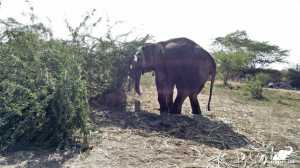
Last November, Wildlife SOS established India’s first Elephant Hospital, with the mission of providing state-of-the-art veterinary care to elephants suffering from a plethora of medical conditions. The medical arsenal of Elephant Hospital includes mobile diagnostic and treatment tools that allow our veterinary team to treat elephants on-site at their respective enclosures. The ability to treat elephants in their enclosures is essential because sometimes they are weakened to the point that even the slightest of movements is painful for them, and they are all too often on the verge of collapse.
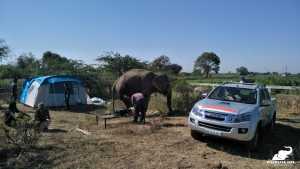
Often the health of the elephant is compromised so much that undertaking a journey to a safe treatment site can be draining, and even fatal. Recently, when Luna was being translocated to the Wildlife SOS Elephant Hospital for treatment, the journey proved to be incredibly challenging for her as the severe inflammation in her feet prevented her from standing back up, if she laid down to rest. Instead of waiting for her to reach the Wildlife SOS Elephant Hospital to provide her with relief, our veterinary team brought the treatment on-site in the form of critical drugs to ease her pain then and there, and a crane to assist her to stand up when necessary.
Another such case of prolonged abuse that came to the notice of Wildlife SOS was of a 36-year old elephant, Champa, in Maharashtra. Upon preliminary examination, the team found that Champa had poor body conformation, swelling and pain in both of her hind legs. In fact, even sitting down or taking a single step forward was extremely painful for her. The veterinary team was immediately dispatched from the Wildlife SOS Elephant Hospital to reach this elephant in distress. Using equipment such as a thermal imaging camera and portable x-ray machine, the team was then able to conclusively diagnose severe arthritis and muscle sprains in Champa’s hind legs, that explained the crackling sound coming from her hind legs at the slightest movement. The team wasted no time in providing her with laser therapy for her swollen hind legs, bringing some much-needed relief to her inflamed muscles. For a duration of 5 days, our team installed a medical camp at the location where Champa was stationed, attending to her needs 24 x 7 and dressing her wounds. However, despite this treatment, Champa was too weak to be able to undertake the long journey from Pune to the Wildlife SOS Elephant Hospital. After Champa’s condition improved, she was moved to a local rehabilitation facility where a dedicated local organisation will cater to her needs and tend to her ailments.
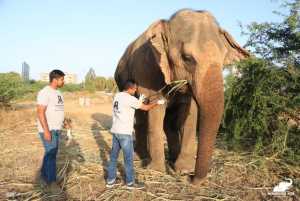
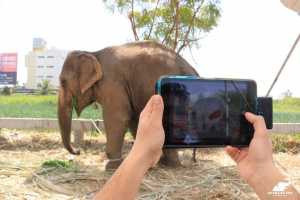
The team was later invited to medically examine a tusker in Kerala. This young bull elephant was unable to bear weight on his front legs due to obviously painful joints. A diagnosis of the elephant’s condition was necessary to map out a future course for the remainder of his life. X-rays of his front leg revealed that the bull’s joint is abnormally fused, that is, he is suffering from ankylosis. Thermal imaging also revealed that the bull is suffering from early severe osteoarthritis. Our team recommended that the elephant can be helped by retiring immediately from his duties as a temple elephant, removing his heavy chains, and be sent to the elephant hospital in Mathura for hydrotherapy treatment and other specialized care.
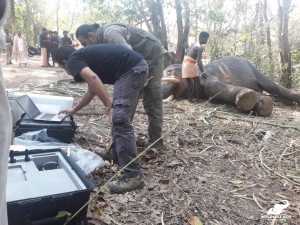
Even though we wish to treat every elephant in distress at the WSOS Elephant Hospital, it is sometimes in the best interest of the elephant to take the Elephant Hospital to them via means of mobile veterinary equipment. Providing critical medical aid to the elephants in need brings us one step closer to providing a better life to the captive elephants of India, and we hope that you will continue to support us in this important mission.

